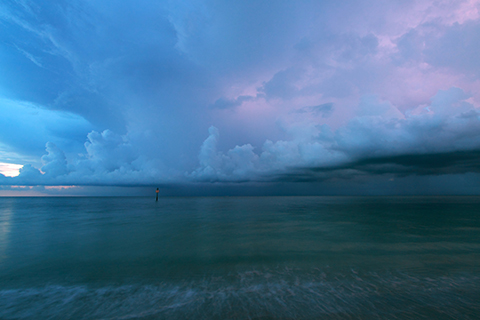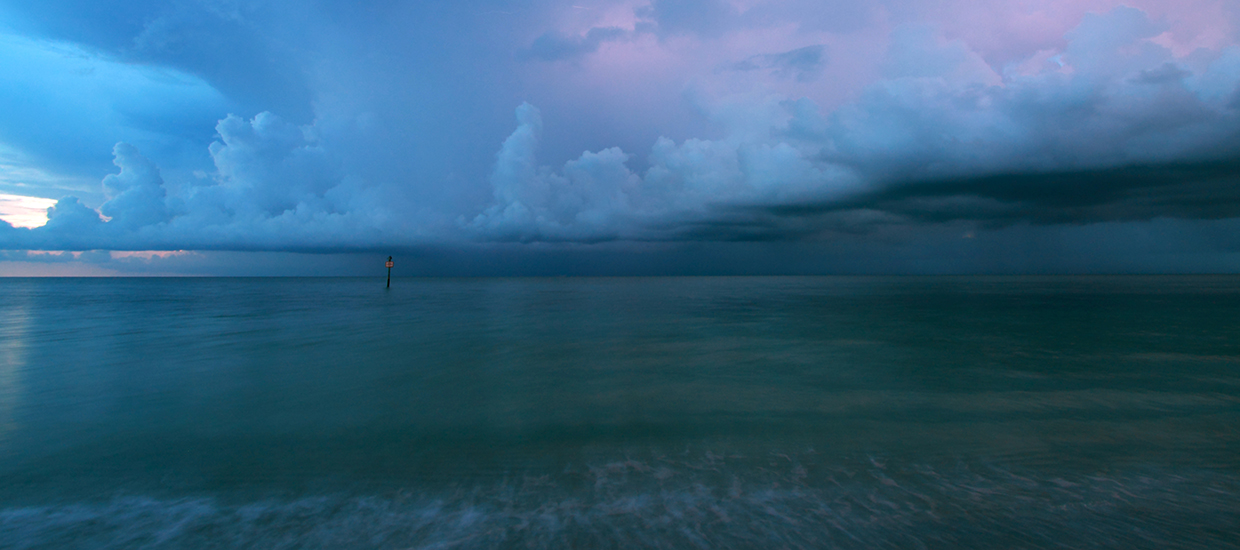Cloud-Aerosol-Rain Observatory: CAROb
The radiative impact of low clouds on climate is substantial, yet our understanding of basic low-cloud processes remains uncertain. This challenges predictions of the low-cloud response to global warming, further complicated if aerosol is also considered. South Florida is unique in the US for its near-tropical location and frequent exposure to the Atlantic trade-winds. South Florida also experiences Saharan dust every year, forming the main pollutant within an otherwise relatively pristine coastal environment. South Florida's Cloud-Aerosol-Rain Observatory, located 4 km offshore of the Miami FL mainland, is an instrumentation suite dedicated to characterizing the local cloud and aerosol environment, towards improving our understanding of shallow cloud behavior and its interactions with the local thermodynamic, dynamic, and aerosol environment. The camera, geostationary satellite, and radar imagery below provide context of today's clouds and precipitation conditions. Visit our dust page to evaluate today's dust activity and its projection.









